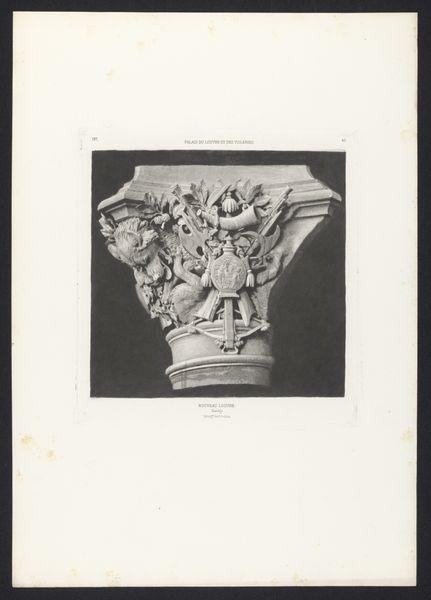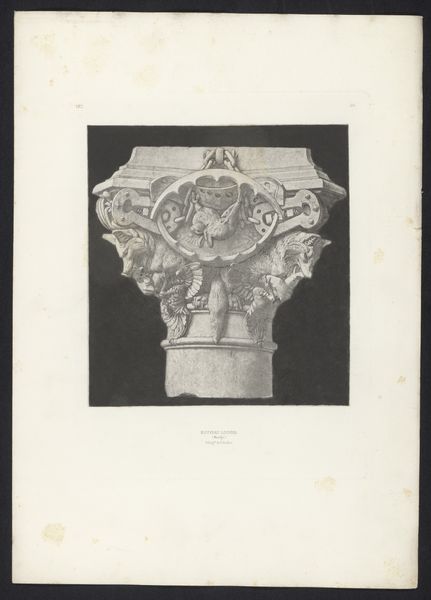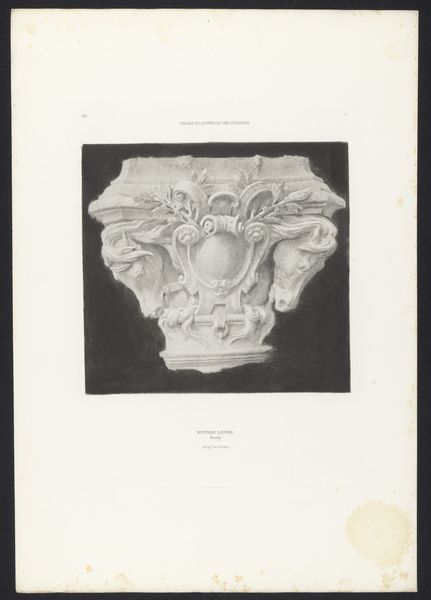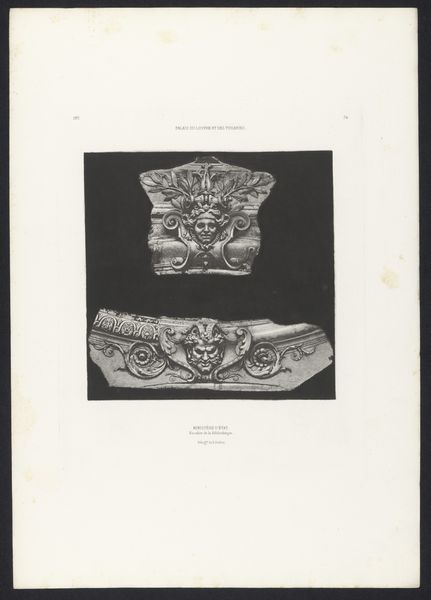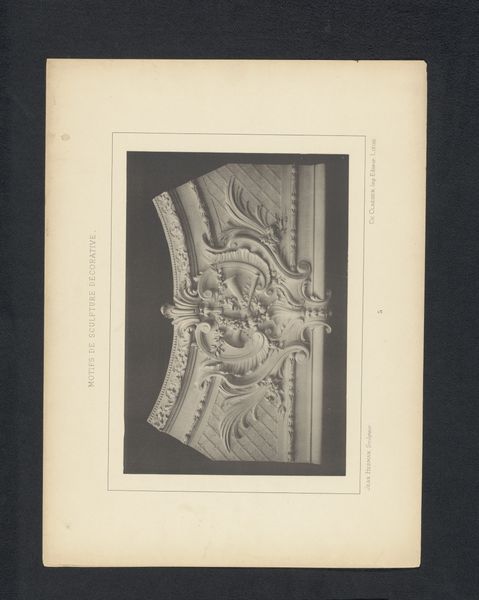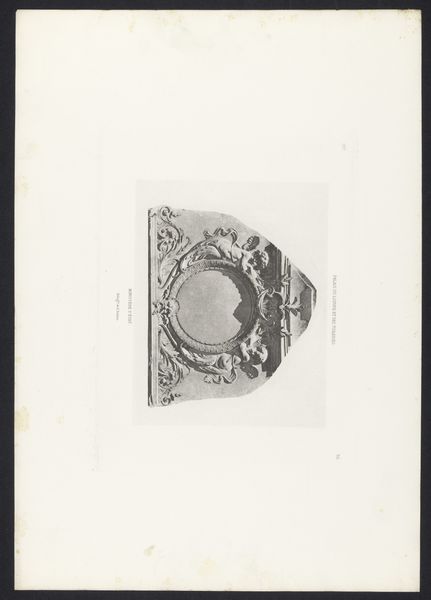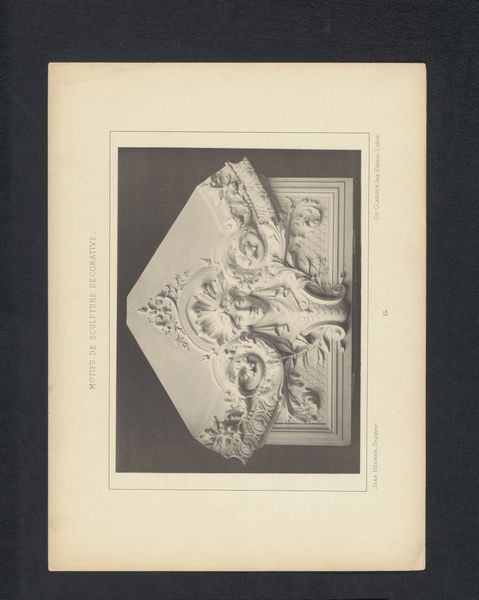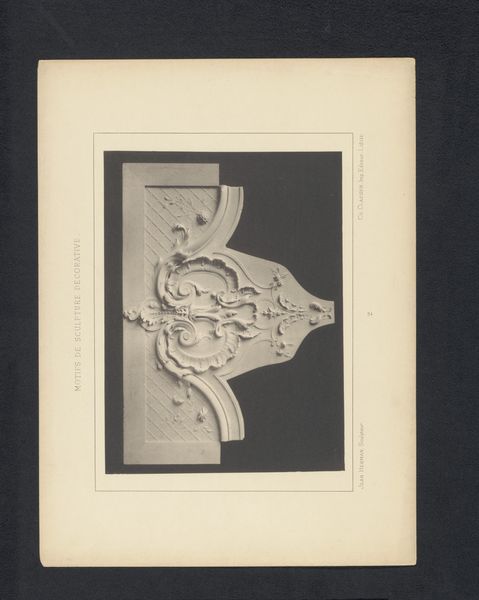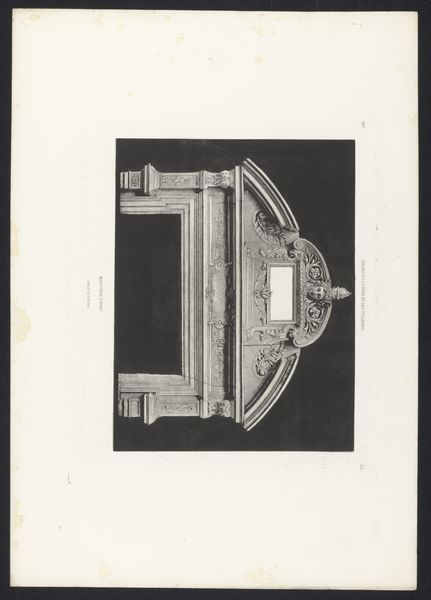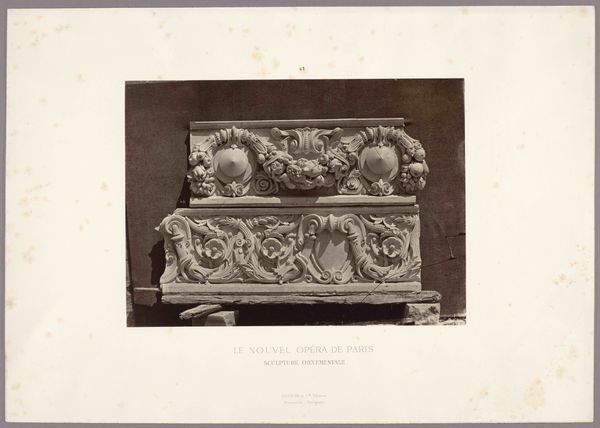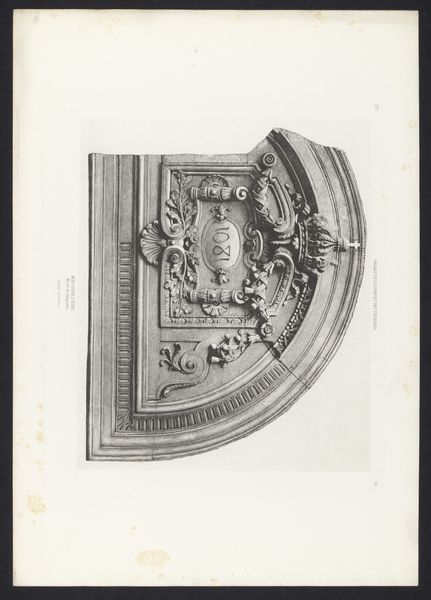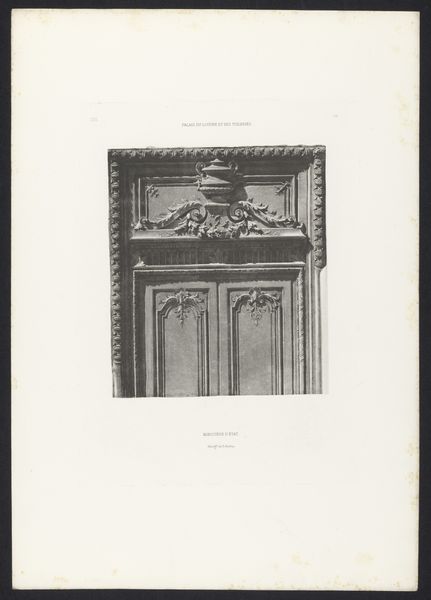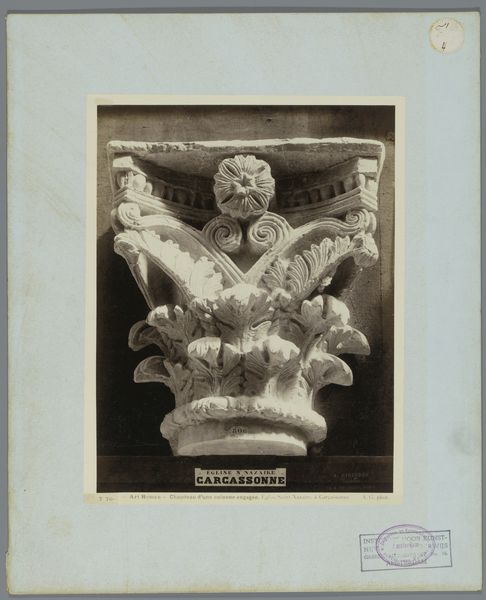
Fotoreproductie van een tekening, voorstellende een kapiteel met dierornamenten voor de Salle du Manège in het Palais du Louvre te Parijs before 1870
0:00
0:00
Dimensions: height 183 mm, width 179 mm
Copyright: Rijks Museum: Open Domain
This is Edouard Baldus's photograph of an animal-ornamented capital for the Salle du Manège in the Palais du Louvre, Paris. Note the ram heads adorning the sides, symbols deeply rooted in history. The ram, or Aries, was a potent symbol of virility and leadership in ancient cultures, often associated with gods and royalty. The ancient Egyptians revered rams as symbols of fertility and creative energy, associating them with the god Khnum, who was depicted with a ram's head. Observe how this motif of the ram, powerful and virile, has been carried over from antiquity through the Renaissance. It takes on a new meaning in the context of nineteenth-century France. Though the meaning is more secular, its appearance evokes the history of man’s subconscious, and the emotional, psychological, and cultural associations we carry with us. These motifs, embedded in our collective memory, resurface and evolve, continually engaging viewers on a profound, subconscious level.
Comments
No comments
Be the first to comment and join the conversation on the ultimate creative platform.
